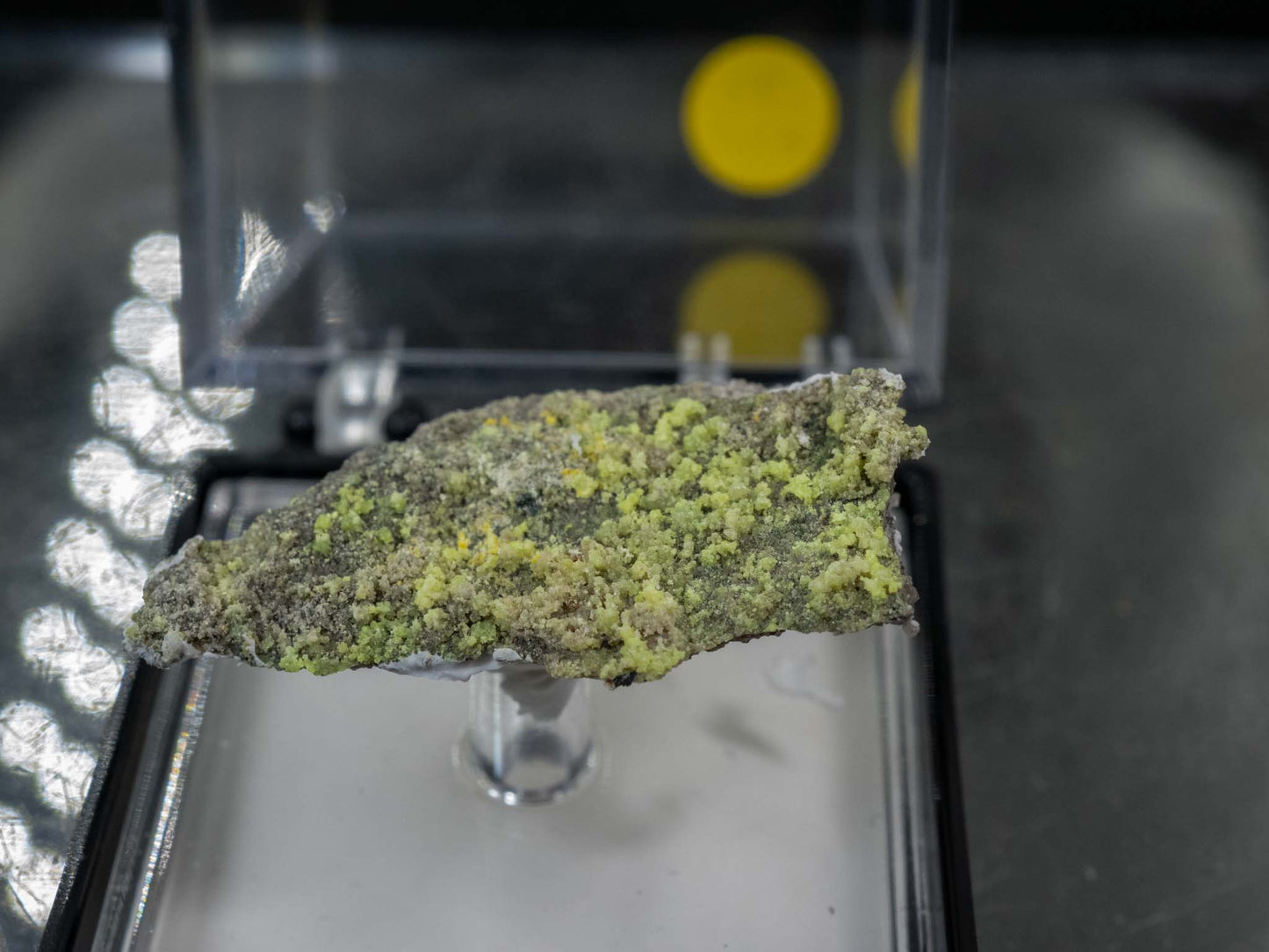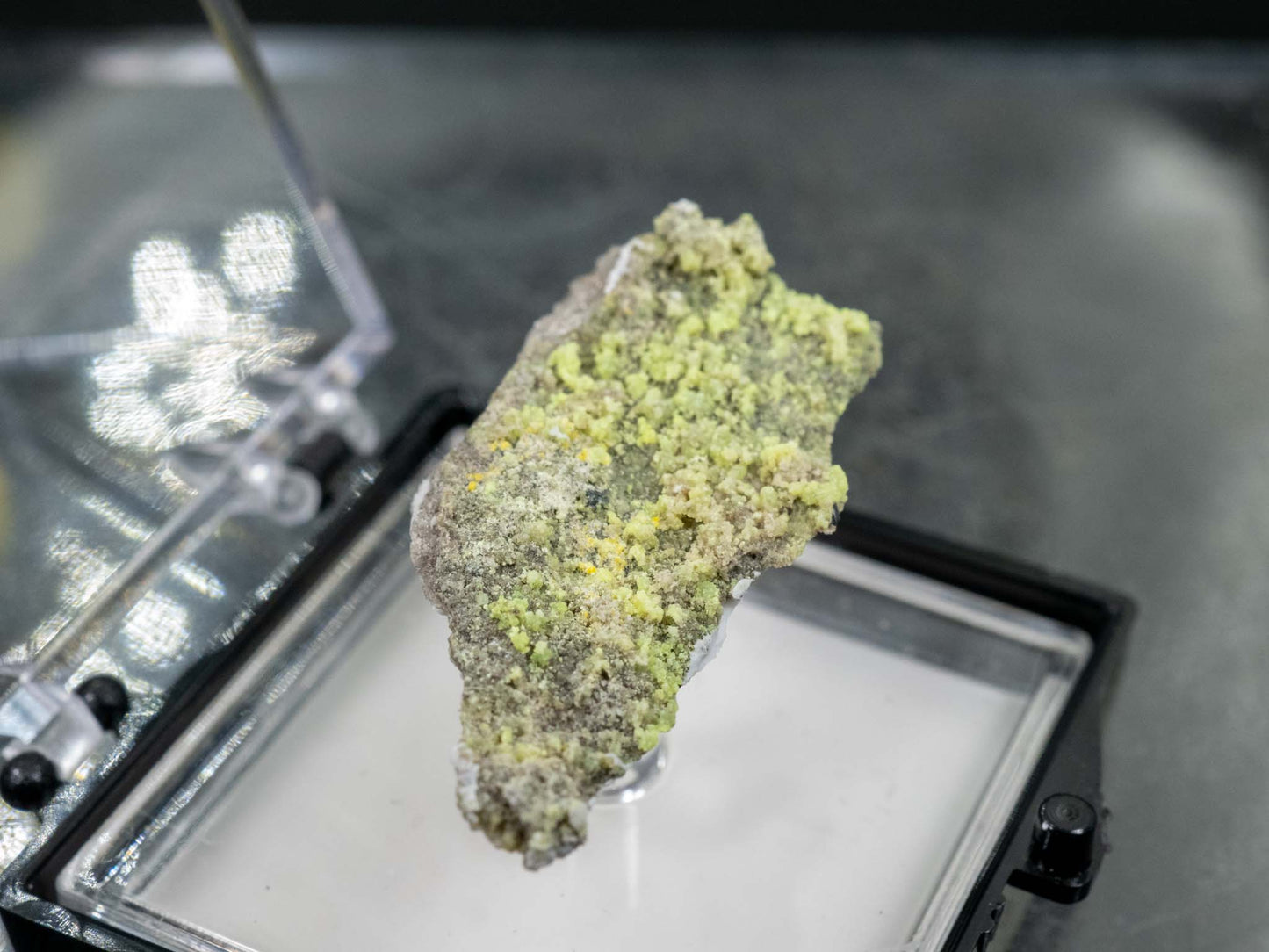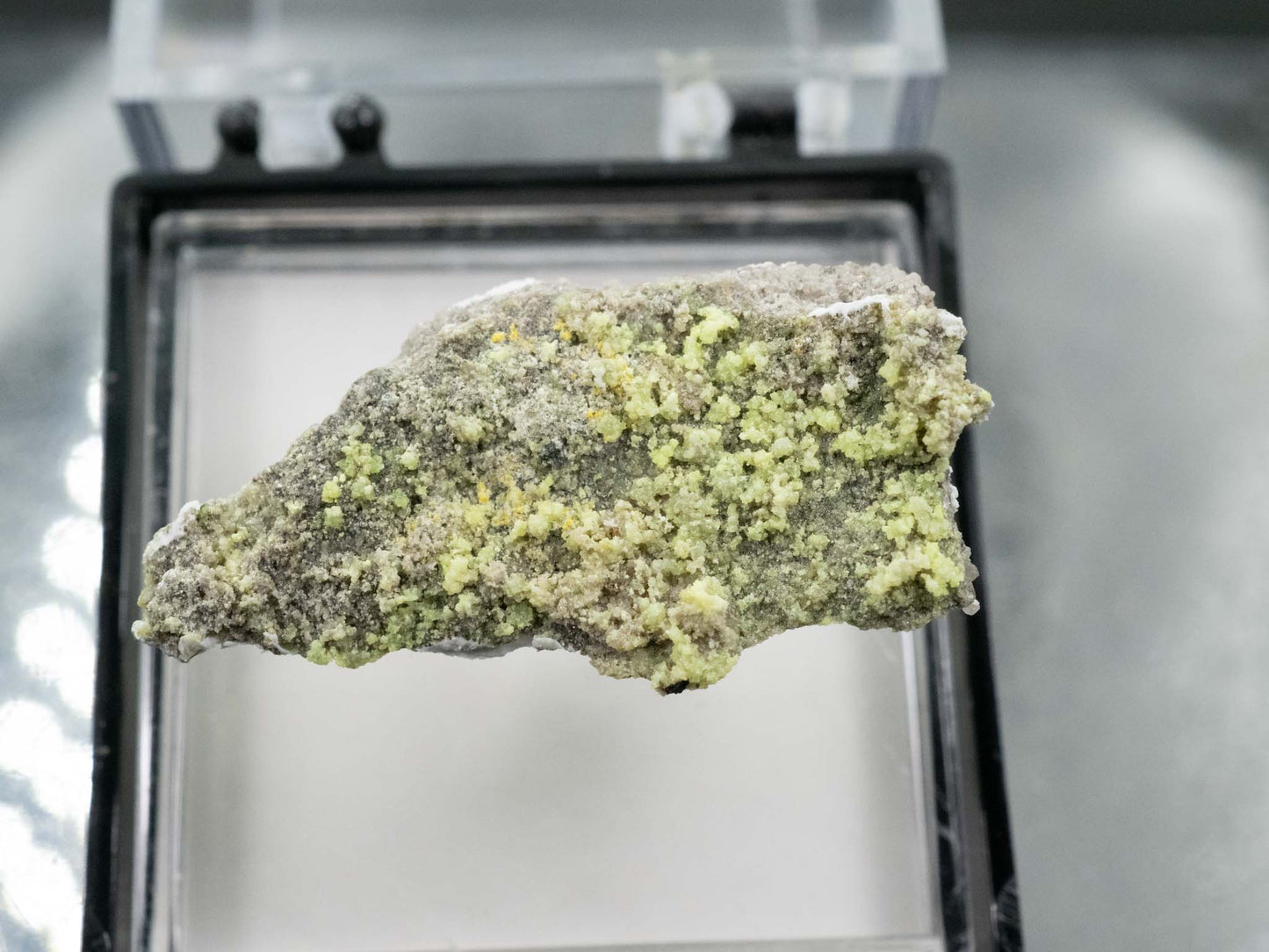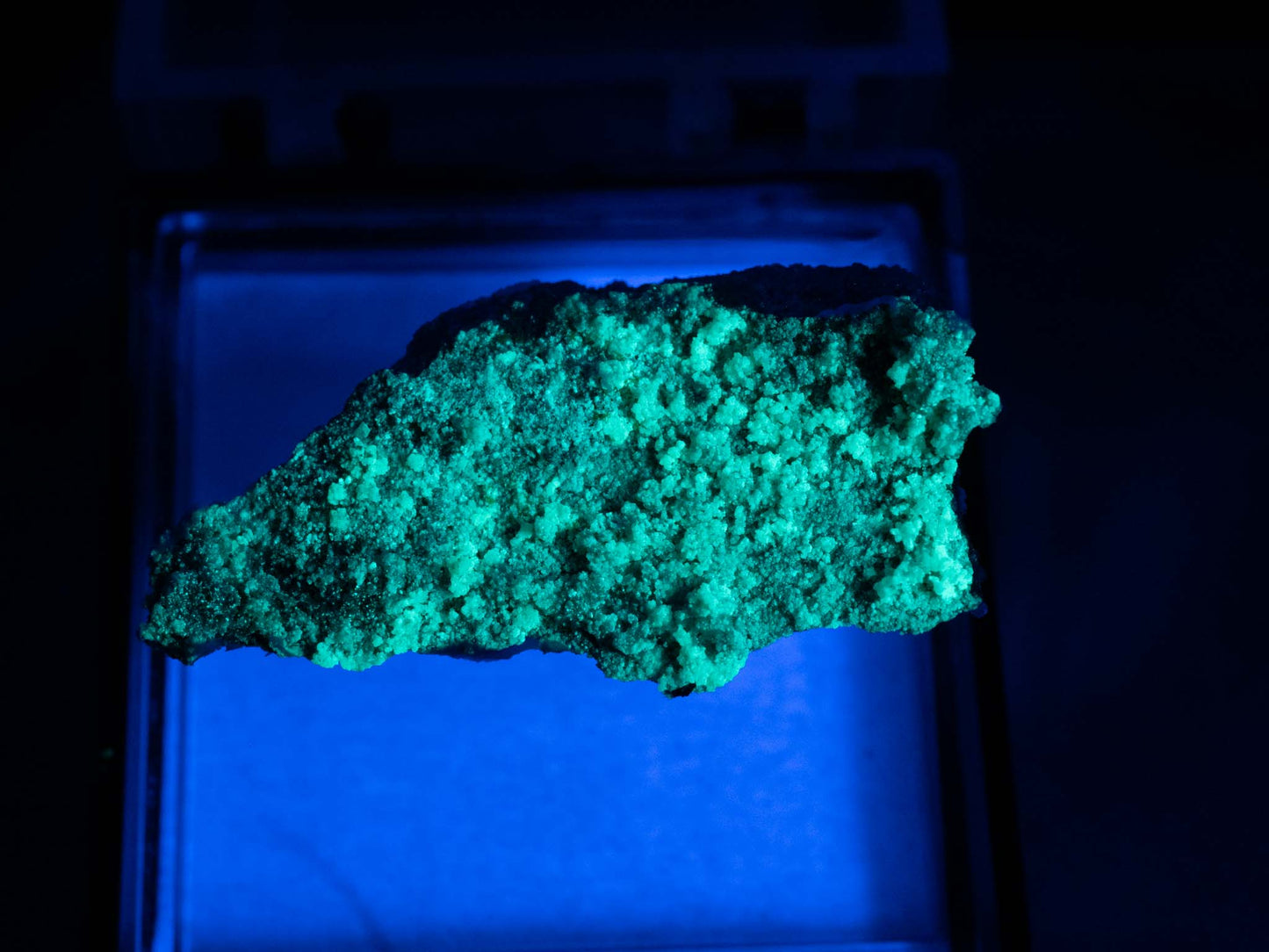Rad Man Minerals
Andersonite - D-Day No. 2 Mine, D-Day Mine group, Thompsons Mining District, Grand County, Utah, USA
Andersonite - D-Day No. 2 Mine, D-Day Mine group, Thompsons Mining District, Grand County, Utah, USA
Couldn't load pickup availability
 Na2Ca(UO2)(CO3)3 · 6H2O
Na2Ca(UO2)(CO3)3 · 6H2O
Andersonite from the D-Day No. 2 Mine in the Thompsons Mining District, Grand County, Utah, is a stunning uranium carbonate mineral prized for its vivid fluorescent properties and vibrant colors. Typically forming as crusts or small tabular crystals, andersonite is known for its striking green to yellow-green hues in daylight. Under ultraviolet light, it exhibits an intense teal-green fluorescence, a characteristic that makes it highly sought after by collectors of fluorescent minerals. The mineral is usually found associated with other secondary uranium minerals such as schrockingerite, tyuyamunite, and carnotite, often occurring on sandstone matrices that host the uranium-rich deposits.
The D-Day No. 2 Mine lies within the Thompsons Mining District, an area historically significant for uranium extraction during the mid-20th century. Andersonite formed in this environment through the oxidation of primary uranium minerals in the arid conditions of the region. These conditions facilitated the interaction of uranium-rich fluids with carbonate-rich environments, allowing andersonite to crystallize as a secondary mineral. Specimens from this locality are not only visually appealing but also offer insight into the complex geochemical processes that occur in uranium-rich deposits. Due to its uranium content, andersonite specimens are slightly radioactive, and collectors handle them with care to preserve their integrity and ensure safe storage.
Approx. specimen size: 28mm x 15mm x 6mm
Approx. specimen activity on an SE International Ranger EXP: 4800 CPM












